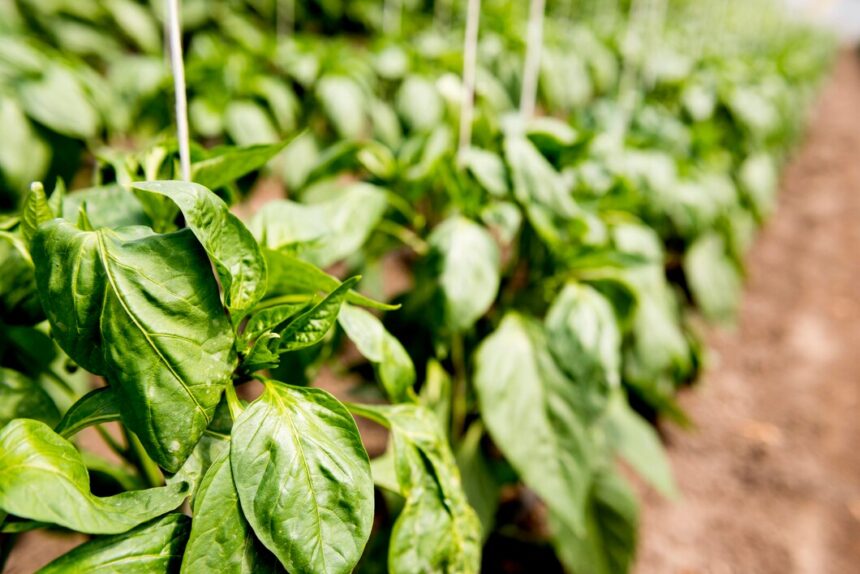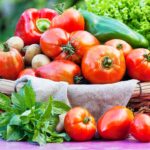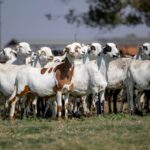Basil is a popular herb known for its aromatic leaves, commonly used in culinary dishes and traditional medicine. For South African farmers, growing basil can be a profitable venture, given its high demand in both local and international markets. This article outlines the complete process of growing basil from seed to harvest, covering land preparation, growth stages, inputs, pest management, and storage.
1. Land Preparation
Soil Requirements:
- Type: Basil thrives in well-drained, loamy soil enriched with organic matter. A pH of 6.0 to 7.0 is ideal.
- Preparation: Clear the land of weeds, rocks, and debris. Tilling the soil to a depth of at least 30 cm improves aeration and drainage. Incorporate well-rotted compost or organic matter to enhance soil fertility.
Machinery Required:
- Tiller or tractor for soil preparation
- Hand tools (hoe, rake, shovel) for fine-tuning the soil
2. Sowing Seeds
When to Plant:
- Basil seeds can be sown directly into the soil or started in seed trays. The ideal planting time is during the warm months (spring and early summer) when the risk of frost is minimal.
Sowing Process:
- Spacing: Sow seeds approximately 1 cm deep, spaced 30 cm apart in rows. If using trays, transplant seedlings when they have two to three true leaves.
- Watering: Lightly water the soil after sowing to maintain moisture but avoid waterlogging.
3. Growth Stages
Germination (7-14 days):
- Watering: Keep the soil consistently moist during germination.
- Temperature: Maintain a warm environment (20-25°C) to encourage rapid germination.
Seedling Stage (2-4 weeks):
- Thinning: Once seedlings are established, thin them to ensure good air circulation and nutrient access.
- Fertilization: Use a balanced fertilizer (NPK 10-10-10) at half strength to promote healthy growth.
Vegetative Stage (4-6 weeks):
- Watering: Water deeply once or twice a week, allowing the soil to dry slightly between waterings.
- Fertilization: Side-dress with organic fertilizer or compost every 3-4 weeks for sustained growth.
Flowering Stage (6-8 weeks):
- Monitor plants for flowering, as basil leaves lose flavor if allowed to flower. Pinch off flower buds to encourage leaf production.
4. Pest and Disease Management
Common Pests:
- Aphids: Small, sap-sucking insects. Use insecticidal soap or neem oil when infestations are noticed.
- Whiteflies: They can be managed with sticky traps or insecticidal soap.
- Spider Mites: Increase humidity and use miticides if infestations are severe.
Diseases to Watch:
- Downy Mildew: A fungal disease causing yellowing leaves. Ensure proper spacing for air circulation and avoid overhead watering.
- Bacterial Leaf Spot: Use resistant varieties and apply copper-based fungicides when symptoms appear.
5. Harvesting
Timing:
- Basil is typically ready for harvest 6-8 weeks after sowing. The best time to harvest is early morning when oils are most concentrated in the leaves.
Method:
- Use scissors or shears to cut stems, leaving at least 5-10 cm of growth for future harvesting. Regular harvesting promotes bushier growth.
6. Storage
Post-Harvest Handling:
- After harvesting, remove any damaged or discolored leaves and wash the basil gently in cool water.
Storage Methods:
- Short-term: Store fresh basil in the refrigerator in a sealed bag or container with a damp paper towel to maintain moisture.
- Long-term: Basil can be dried or frozen. For drying, hang stems upside down in a cool, dark place. For freezing, chop leaves and mix them with water in ice cube trays.
7. Inputs and Fertilizers
Fertilizers:
- Use a balanced NPK fertilizer (10-10-10) for the initial growth stages. During the vegetative stage, a higher nitrogen fertilizer can promote leaf growth, while a potassium-rich fertilizer can be used to enhance flavor during the flowering stage.
Water Requirements:
- Basil requires about 1-2 inches of water per week. Water deeply to encourage deep root growth, and adjust frequency based on rainfall and temperature.
Growing basil can be a rewarding and lucrative agricultural endeavor for South African farmers. By following these detailed steps—from land preparation to harvesting and storage—you can cultivate healthy basil plants that meet market demands. Always stay vigilant for pests and diseases, and adjust your practices according to the specific conditions of your region. With careful management and the right inputs, your basil crop will thrive.
Join 'Farmers Mag' WhatsApp Channel
Get the latest Farming news and tips delivered straight to your WhatsApp
CLICK HERE TO JOIN






